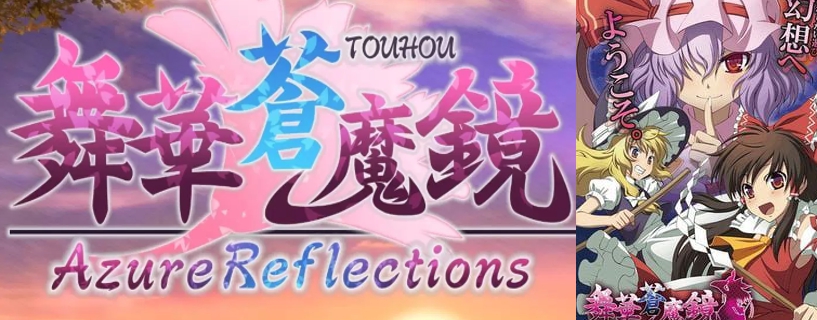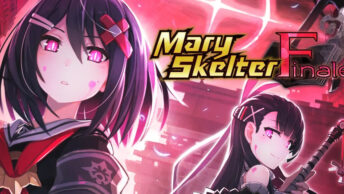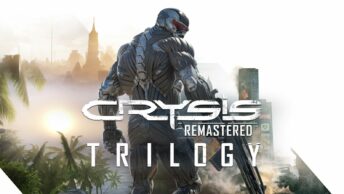Looking for some bullet hell craziness? Perhaps you need a change of pace from action-adventure games and RPG’s with a bit of twitch reflex arcade action? Well then, Azure Reflections might be a good game to start with on the Switch.
Type: Single-player, Local Co-op
Genre: Bullet Hell, Shmup, Touhou
Developer: Unties
Publisher: Sony
Release date: 30 Aug, 2018


Amid the glowing pink and blue orbs of death, I came to a realization. There is a wonderfully satisfying feeling when you squeeze into just the right spacing between gorgeous exploding bullet patterns to pull off an attack that kills a boss. It’s not unlike winning a tough match in Tekken 7 or defeating a difficult boss in an ARPG with only one hit left on your health. That’s the rush of a Touhou game and if you are looking for that type of feeling, then this just may be the game you are looking for to get into this genre.
Azure Reflections is a horizontal side-scrolling bullet hell shmup Touhou game. If that makes no sense to you, you can reference this wiki here. We are talking about a game where hundreds if not thousands of bullets are coming at you all at once and you have to navigate the minute empty spaces where there are no bullets while shooting all the bad guys both in front of and behind you.
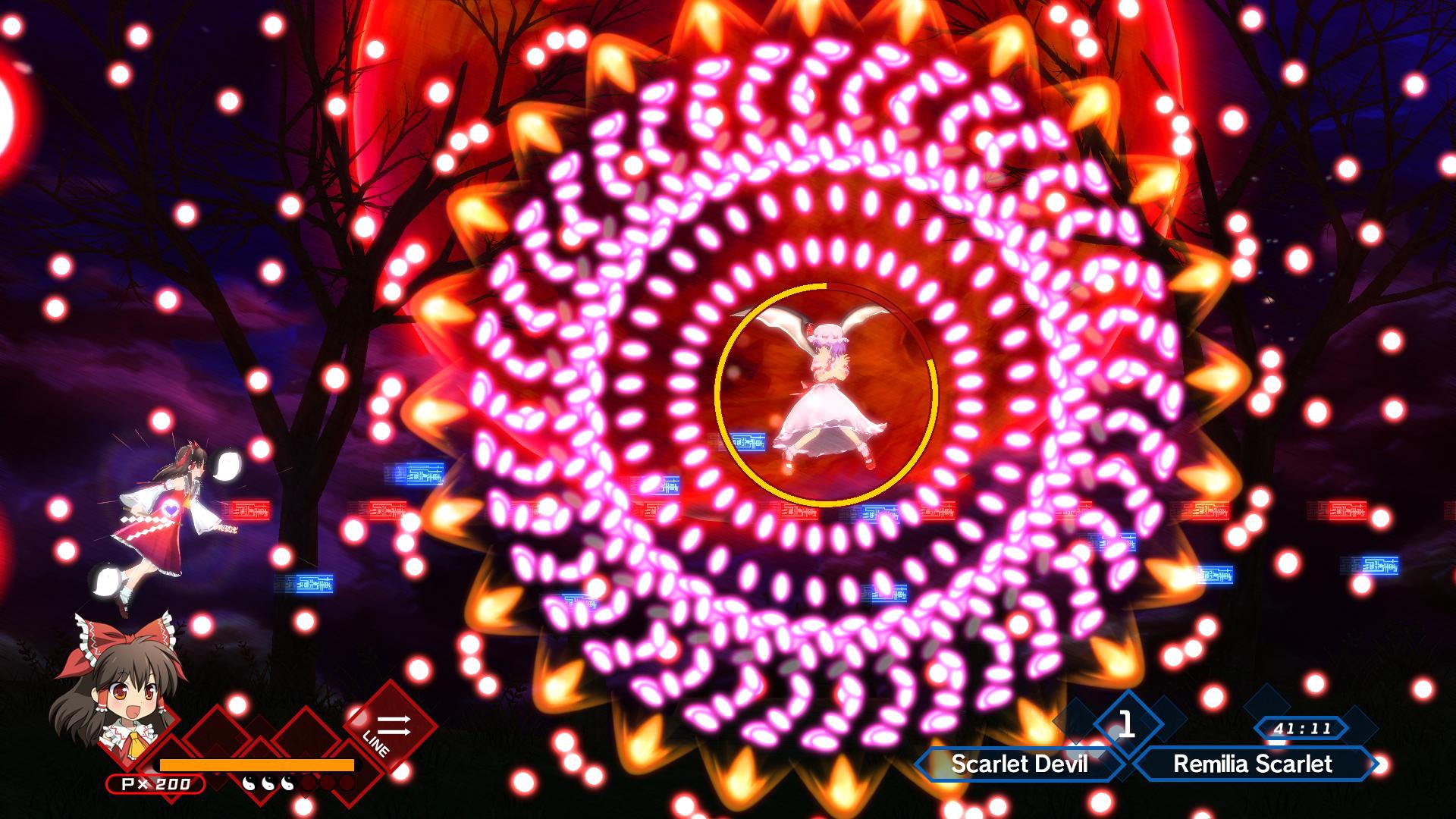
Gameplay: Starting Out for New Players
I am not a bullet hell expert, so this entire review is based on someone who has played a few bullet hells before for a handful of levels, but never a Touhou game. That’s really what I was curious about. Could an average gamer start out with this Touhou game and enjoy themselves? Well, yes, they can. That said, this game is hard as hell and for newbies, it will be quite difficult to begin at first. However, the game goes out of its way to help new players get into the gameplay with very fair and helpful tools.
First off, there is a replayable Tutorial section to guide you through the basics of the gameplay such as the movement, how to shoot left and right in a horizontal space, and so on. After that part of the tutorial, you’ll be introduced to the rather interesting special game mechanics involved which are Barriers, Spell Cards, and Danmaku Rush attacks. Spell Cards do wide area damage with invulnerability and are a one-button activation, which is very helpful. They have a limited number of uses, and cannot be spammed during boss fights as you can’t clear a stage when a boss has a Spell Card in use ( yes, bosses use them too ). Barriers can be used to absorb all the bullets around you and there is a gauge to fill up in order to use it. There is also a time limit involved, though, so be careful when using it. You can use these Barriers to form a Danmaku Rush move, which will be the primary method you’re going to attack enemies and bosses with, so practicing that move is very important. I generally preferred using an S-shape to attack with because the bullets you absorb into the Barrier can be used for an attack, turning a 3-4 shot attack into something like a 300 shot attack. This means it’s crucial to master this attack against bosses that dole out hundreds of bullets at once to knock down their health fast. There is also a Release Barrier you can use to vaporize the bullets around you, but you lose attack power when you use that and it’s limited.
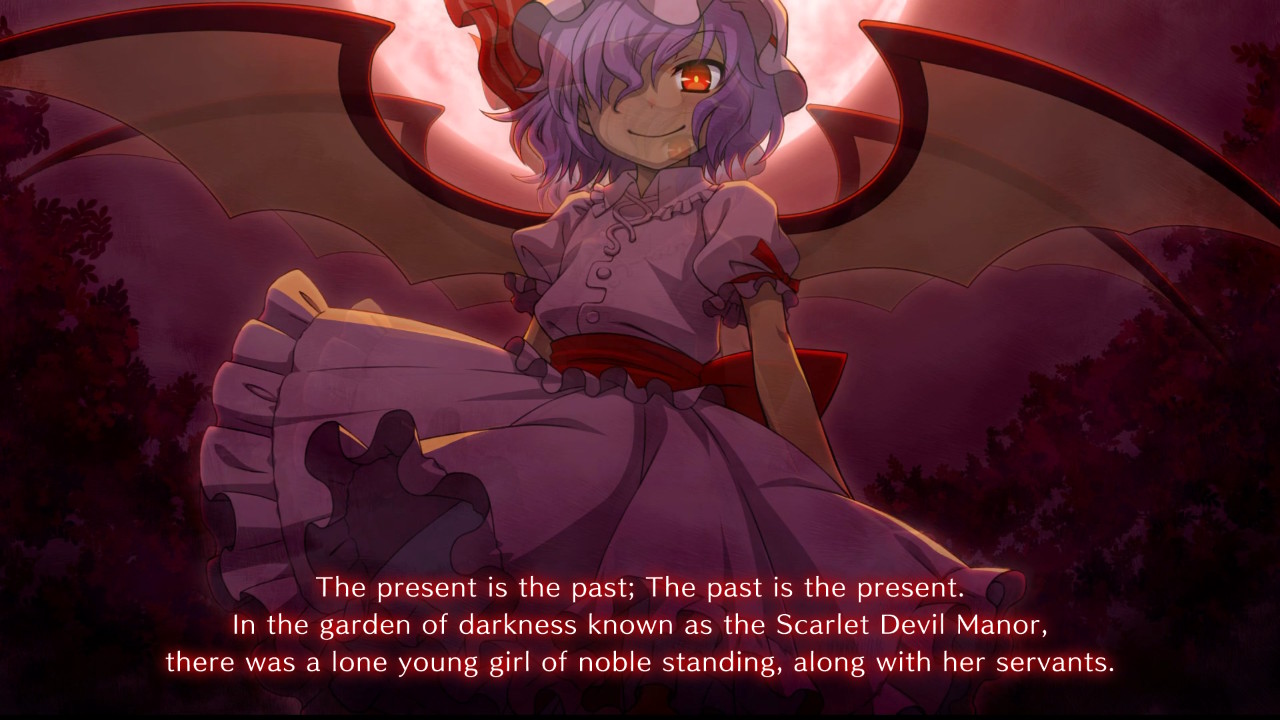
The difficulty is being able to wiggle through all these bullets and shoot down the boss with Danmaku Rushes until they are defeated as well as steal their Spell Cards with a time limit ticking away. As this is a bullet hell, from the very first second of a battle you will be completely pummeled with bullets coming at you from the left and right, meaning you need to dodge them and power up that Barrier gauge for the Danmaku Rush attack. One thing that is very much appreciated is that you can actually SEE your hitbox on your character and although it’s small, it is still vulnerable to a bullet. Once you get hit, you are stunned for a bit and that means you can get hit again just after the stun. It’s a diabolical action sequence when you get stunned just once and can never recover enough to avoid being hit right after you come out of stun. With that, I can see a lot of new players getting frustrated. There are only a few Continues per run, so it’s very disheartening to get far into the Story Mode and run out of Continues, meaning you have to start the Story Mode all over again.
That brings me to my second point, there are three main difficulties: Easy, Normal, and Hard. Do not feel like you are being a baby to start on Easy. Please, do that and practice it for a few story runs before moving to Normal. Normal will kick your butt and Hard is insane. I’ve read that beating the game in Hard mode can unlock a Lunatic mode, but since I can’t beat it in Hard mode I have no idea. I’ll just shrug and continue in Normal for now. For playable characters, you can unlock those by completing the Story Mode, but make sure to get all their Spell Cards and get the good ending. There is nothing to be ashamed of in beginning on Easy, trust me. Easy mode is where you should start, not Normal, until you get your skills finely honed. There is even a Practice Mode just to get used to attacking the bosses and it’s something you should not ignore. So, Azure Reflections honestly goes out of its way to help bring new players to the fold here and I applaud what they have done. If you are looking for a bullet hell Touhou game to start with on the Switch, this is an excellent choice to begin with.
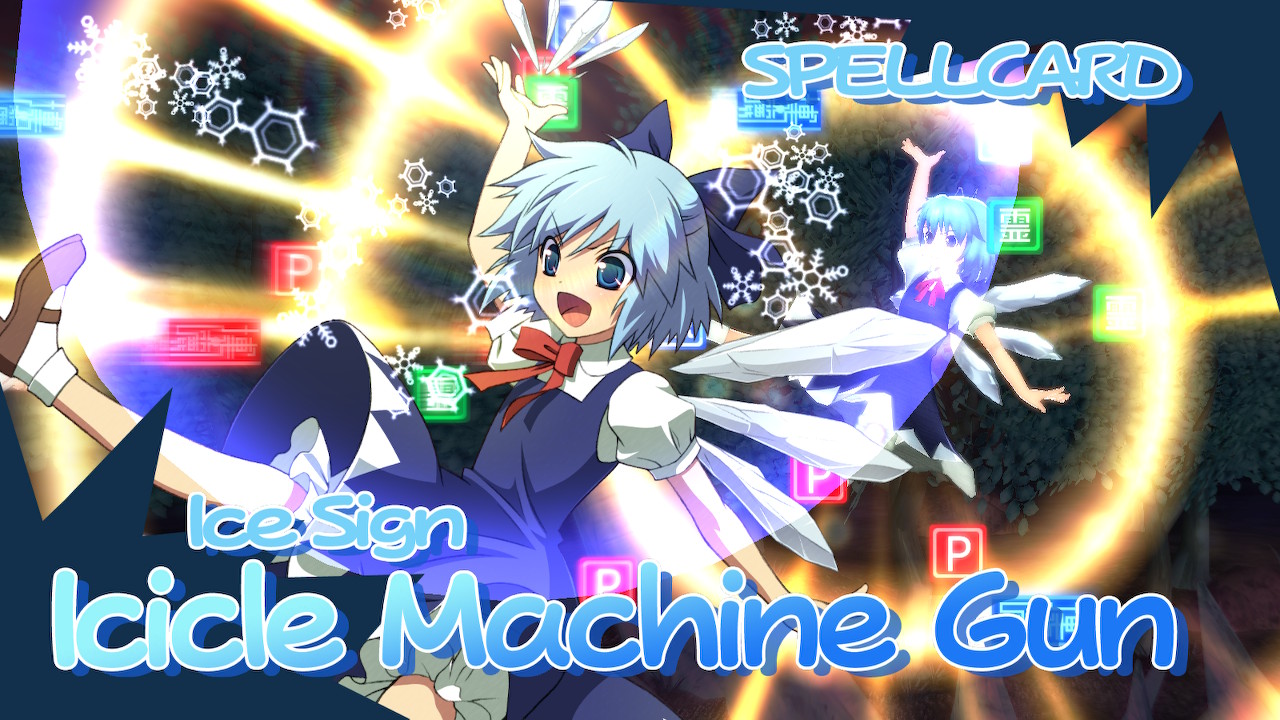
Impressions
Azure Reflections is a horizontal bullet hell rather than a vertical one like Ikagura, for instance. There are bullets coming at your from both the right and left as well as sneaky ones that shoot on curved or linear trajectories and many rotating ones leaving you no breathing room at all. It’s a serious challenge to carefully move in between the bullets while trying to shoot down your enemies. I have to say, it’s not for the faint-hearted and even on Normal, the game will chew you up and spit you out like old chewing gum. Yet, it’s doable. It’s also gorgeous as all the kaleidoscopic rainbow colored patterns fill the screen like someone’s cat decided to play with the lightshow settings at a concert. I love it.
Also, the campaign is super short with just four stages and three half-stages that felt just the same as full stages, especially stage 3.5 as it was seriously a pain in the ass. This means the game is meant to be replayed to get better at and if you die, you can still get back to where you left off after some practice against the boss you lost to. Give yourself roughly 30 minutes per story run, assuming you make it to the end each time.
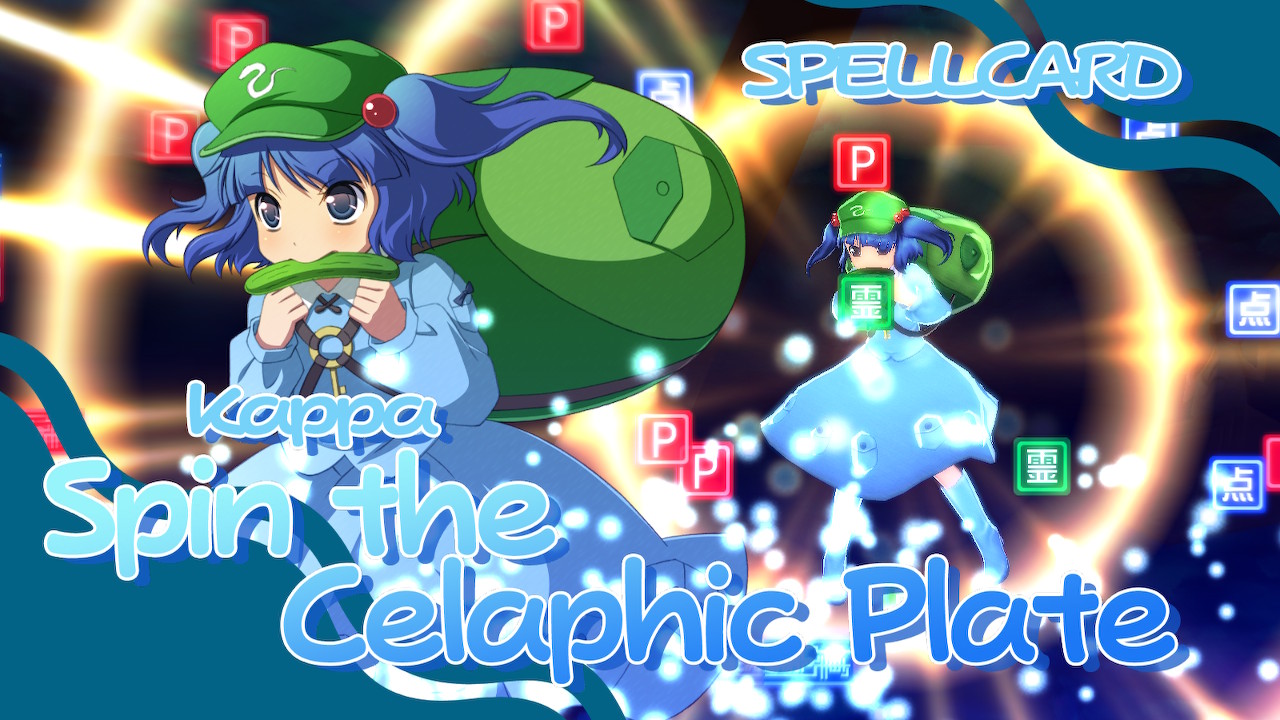
The other point about this game is that it’s all about the bosses. There is little to no level design here, with many levels actually being repeated with a few new skinned enemies that essentially do the exact same things. I wasn’t thrilled with the levels at all, but since the real meat of the game is in the boss fights, it can be overlooked. Each boss has unique characteristics and they don’t feel like repeats like the levels do. As you get closer to the end, the difficulty cranks up really high, even on Easy. The thing to keep in mind is that each boss has Spell Cards and your job is to get them before the time limit is up, or you will not get the good ending at the end of the story. You must get every single spell card, often with a Danmaku Rush attack, and you can’t ignore that. Fail to get one and you may as well start over because you can’t unlock the Extra Stage until you get good endings with all your unlocked characters playing through the entire Story Mode one at a time.
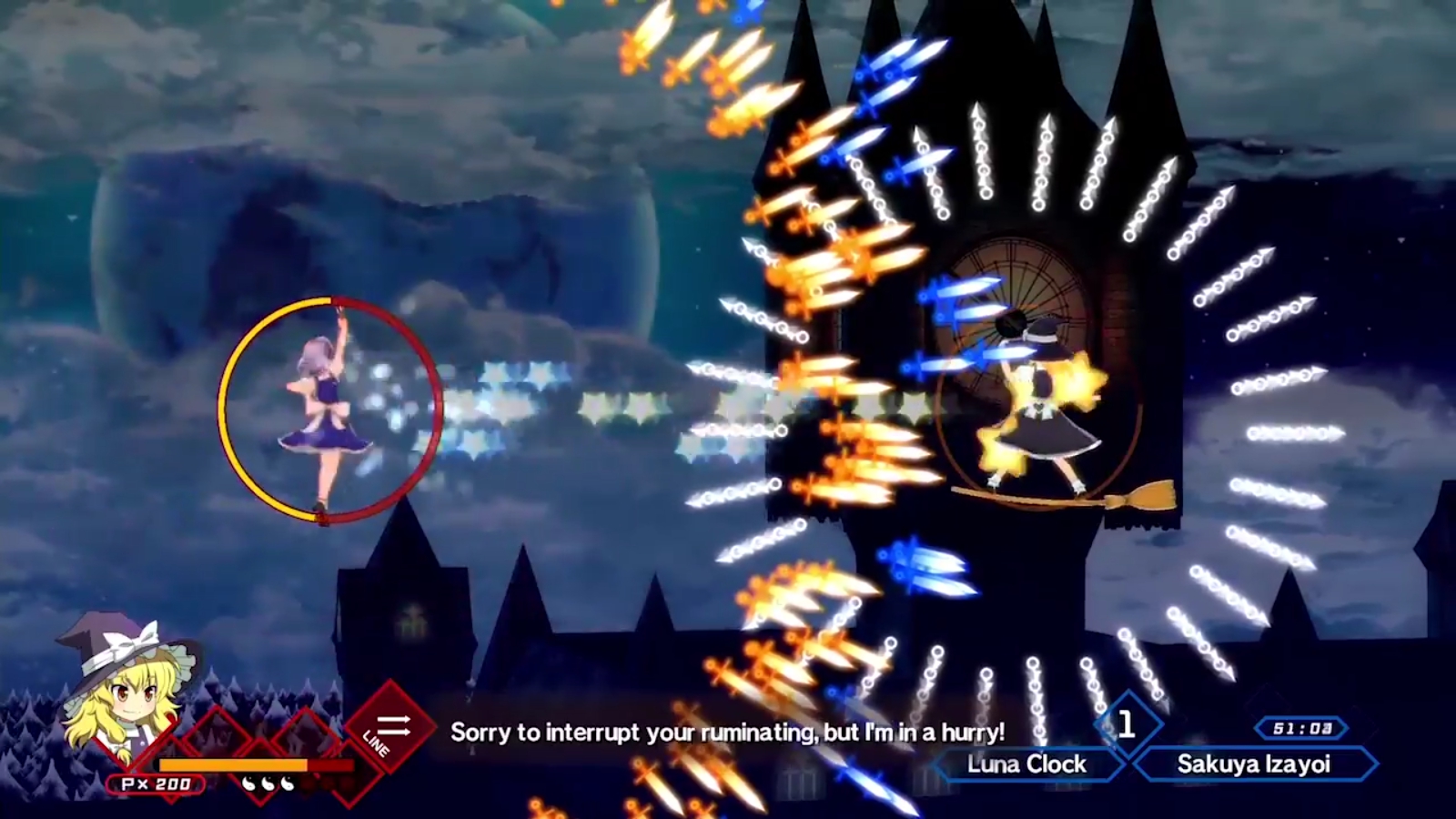
Don’t go in thinking you’ll rip through this if you are new to the genre, give yourself some time to get used to the game and you’ll be fine. For experienced players, I feel it should still give you a good challenge, and there is always the Hard mode to try out for those that dream in bullet hell patterns at night. However, your time with the game may be very brief compared to newbies. While I don’t think this game is specifically aimed at new players, I certainly think it’s aimed at teaching new players how to play with all the tools and practice modes it offers.
In handheld mode, this game is really sweet and I feel like it is almost meant for handheld even if it’s also on the PS4. You can also rebind the controls, which I totally did because I didn’t like where the shooting buttons were. I prefer them on the triggers, not the main buttons.
Co-op mode is available for local co-op and it’s not that fun to be honest. The reason for that is because the main person playing can actually kill everyone if they do not play well enough. This makes every mistake you make a mistake for your partner as well, which is annoying. Additionally, if you bump into each other while playing, you will get stunned. This happened over and over until we just gave up and took turns playing solo.
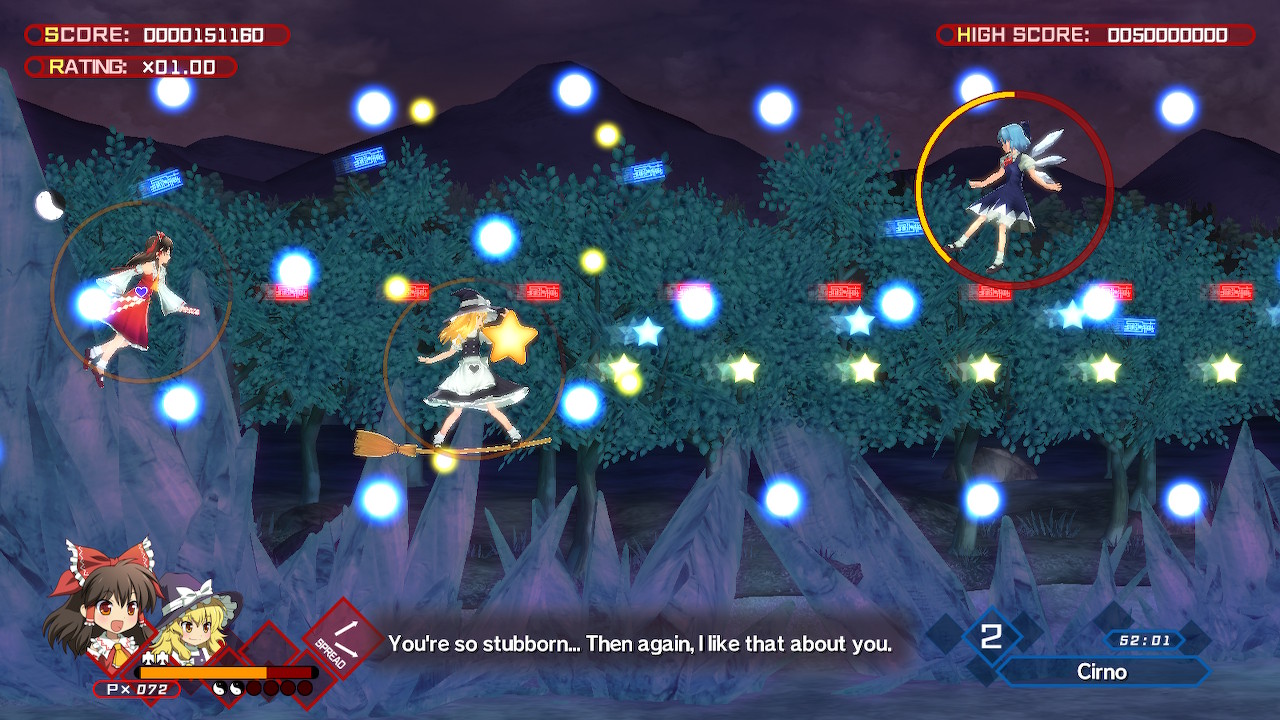
Story
Azure Reflections focuses on boss fights for the most part, but the other large part of the game is the storyline. Yet, it is also it’s Achilles heel. For the story aspect, there was no indication of any backstory information from the game itself other than a very short intro section that left me in the dark to be frank. I had little knowledge of the so-called Red Mist that must be stopped, the town of Gensokyo, or any of the people involved. If you know the characters already, then you’ll likely be right at home, but otherwise expect to be a little distanced from things when figuring out the storyline. For me, all I could understand was that the Shrine Maiden Reimu saw some Red Mist and had to hightail it to the Scarlet Mansion to see who was behind it all and face bosses along the way ranging from vampires to librarians.
The story itself is made up of cutscenes where there is some banter between your playable character and your foe, often along the lines of silly insults with nothing too dramatic. In a way, the story is almost skippable unless you are a fan of the series. Since I didn’t understand some of the things going on in the plot, I read through these subbed scenes without gaining much insight into any character development or plot milestones, but then again there wasn’t much plot to begin with. If you are looking for a story-rich game, look elsewhere. This game is about bosses and learning it’s unique mechanics to have fun and that’s where it’s sweet spot is, not the story.
As you progress through the bosses in the storyline and clear the stages, you unlock new characters to play with; Marisa and Cirno. If you replay the story with those characters and get all the Spell Cards from the bosses when doing so in Normal mode or Hard mode, you receive an Extra Stage as well. You also gain points to unlock accessory slots that actually help upgrade your character, which is a big help.
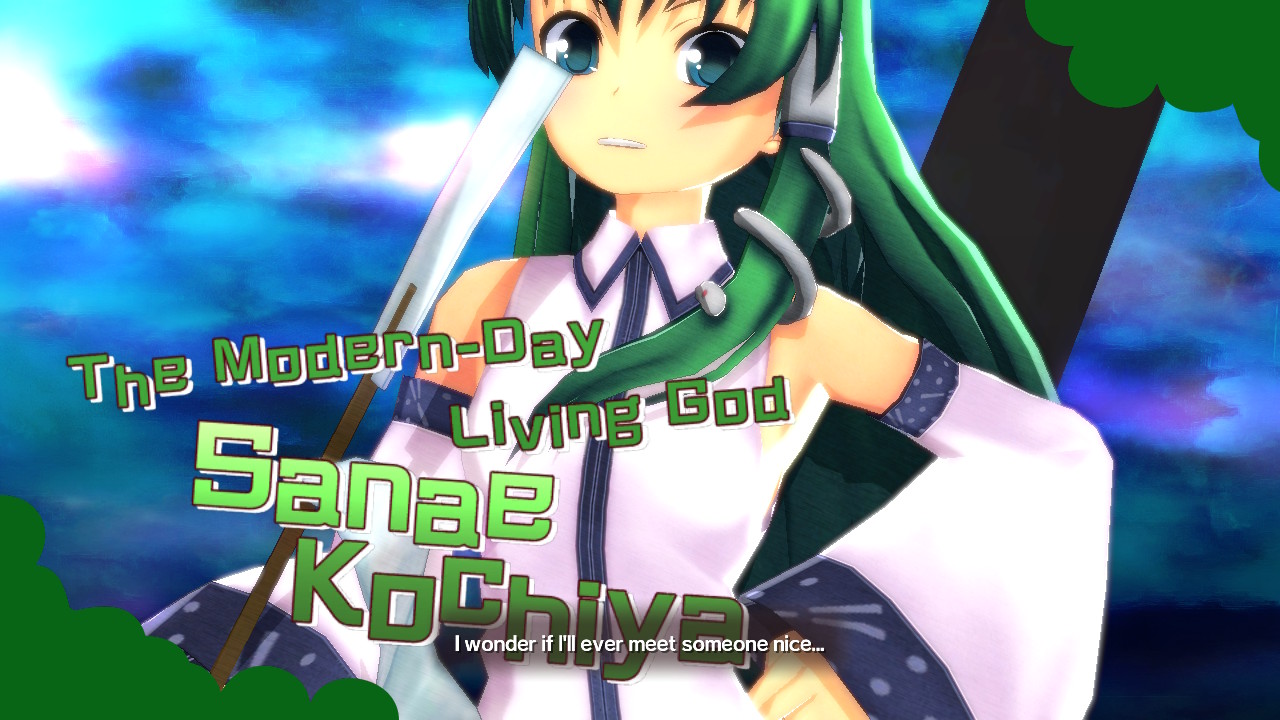
Graphics/Sound
I have to say that while it’s fairly pretty, the graphic presentation is also a bit dated. During cutscenes, there are some terrific 3D animations, but then they are over quite quickly and you are left with the lackluster 2D graphics. Being 2D isn’t such a bad thing for many games, but the enemies, which barely change at all from level to level, don’t have any awesome animations or detail to them. Instead, they follow the art style, yet without looking too overly drawn. Also, the backgrounds were boring and not animated at all, feeling like most of the emphasis was on the gameplay and anime sequences rather than the backgrounds or graphical bells and whistles.
What I preferred over the somewhat plain graphics were the sheer number of bullet patterns, which are gorgeous and deadly all at the same time. Because of this, I felt I could shrug off the lack of attention to the level of graphic quality. You’ll have a cavalcade of shining orbs, rings, squiggly lines, scattered patterns, star shapes, and more to dodge and charge up your Danmaku Rush attack with.
As for the audio, if you enjoy traditional arcade style music you’ll be right at home here. If not, then you may opt for some Spotify in the background. I didn’t think the music was annoying at all, but as I said if you don’t like arcade style music you may not be up for it. That said, the compositions are quite complex with strong electric guitar presence. Sound effects did a great job of notifying me of when I was stunned or could do a Danmaku Rush, so their effectiveness is right on the mark.
The anime styled sections are well drawn, with consistently well colored and perfectly rendered characters. Where the overall level graphics were let down, the actual animations and cut-scenes are well done all in all. I’d lean more towards enjoying those than the graphics involved in the heart of the gameplay.
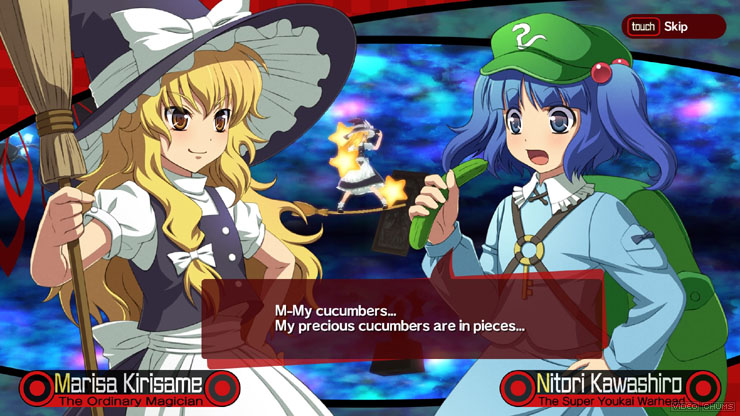
Verdict
Azure Reflections is a game to be experienced for new Switch owners, but those who are already familiar with the genre may find it to be incredibly short. While the boss fights were amazing, the levels were barely there and felt almost tacked on and the graphics somewhat dated. I enjoyed the complexity of the bosses, the use of the Danmaku Rush attacks, and the development of the careful ballet of a Touhou game. I felt this game is very newbie friendly without being overly easy in the least, and honestly may be one of the tougher games I’ve played this year when in Normal mode. I’m rating this a Save for Later, marred only by its brevity and the less than stellar 2D graphics. Grab this on sale or when you’ve got the itch for some bullet hell Touhou fun in mind.

